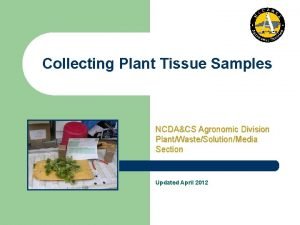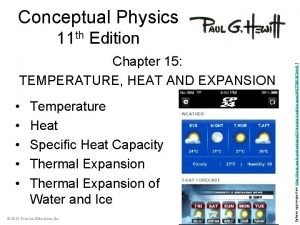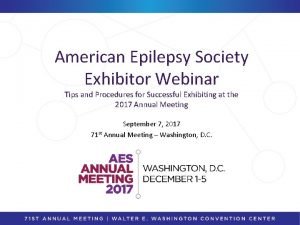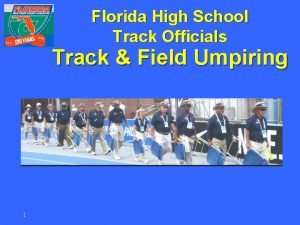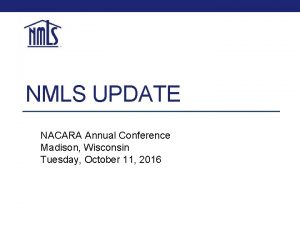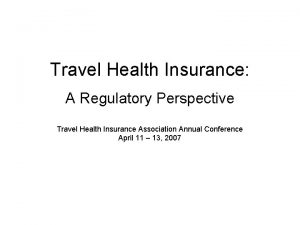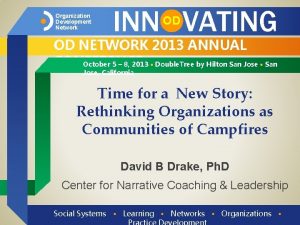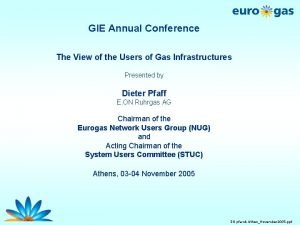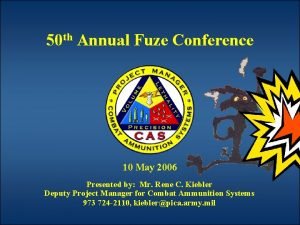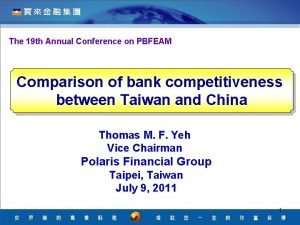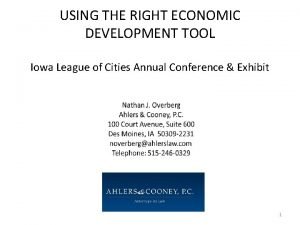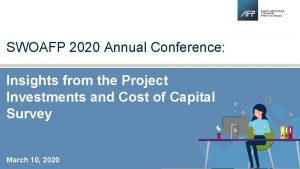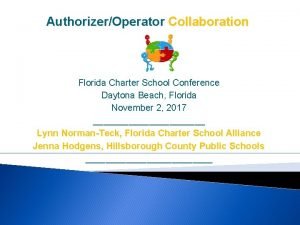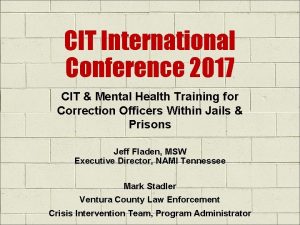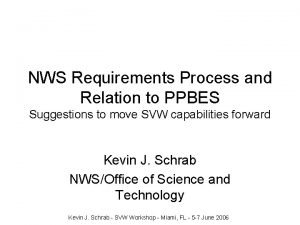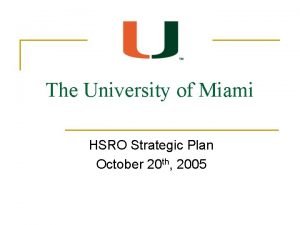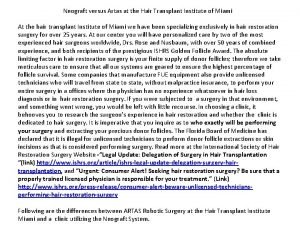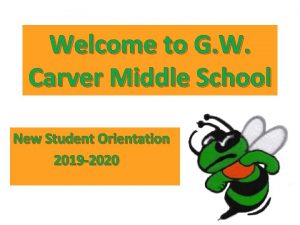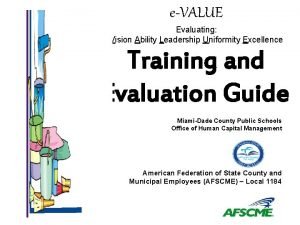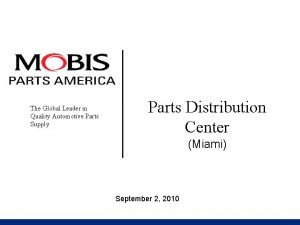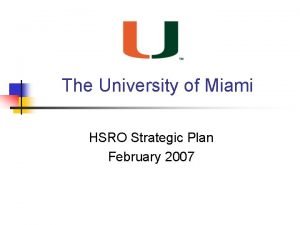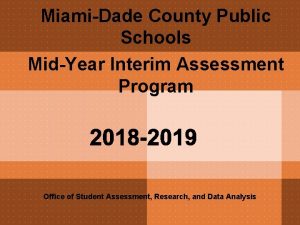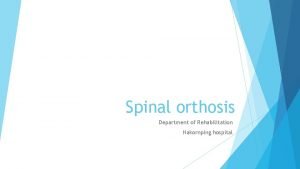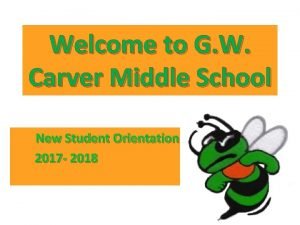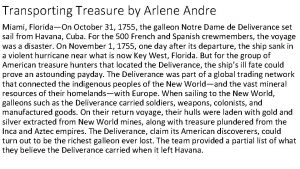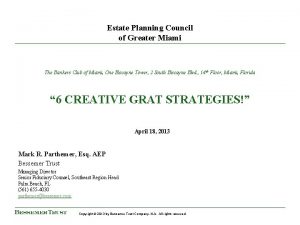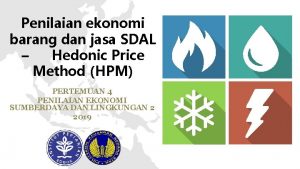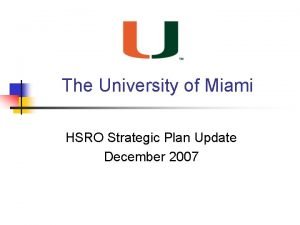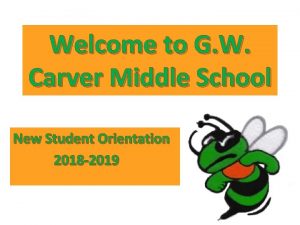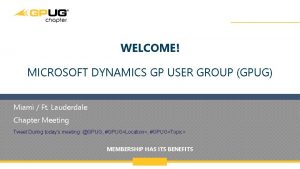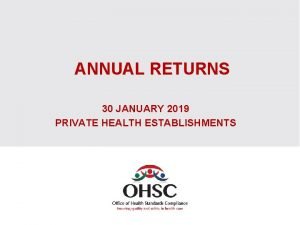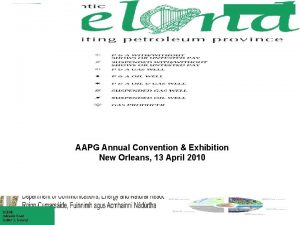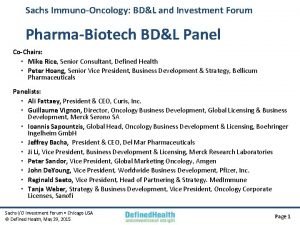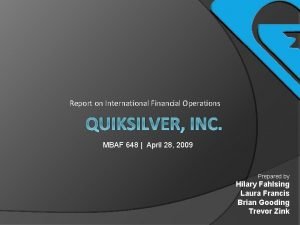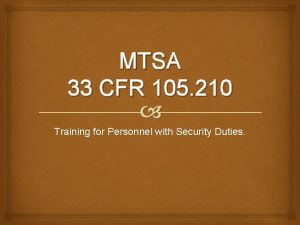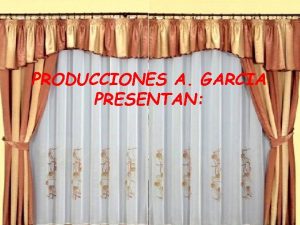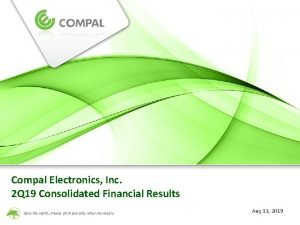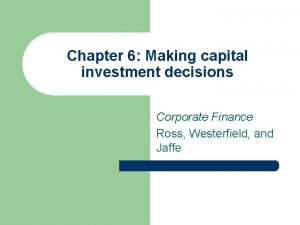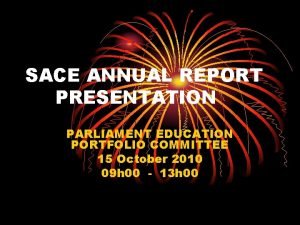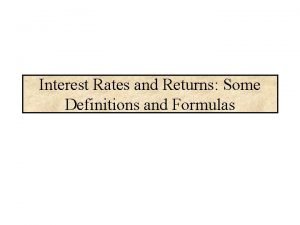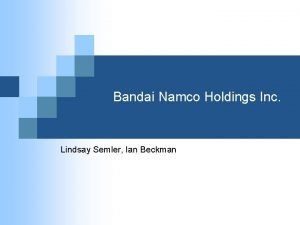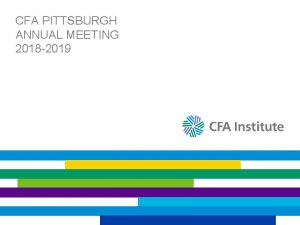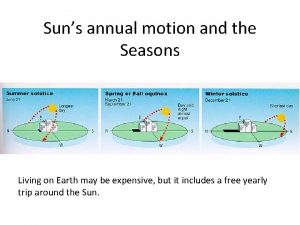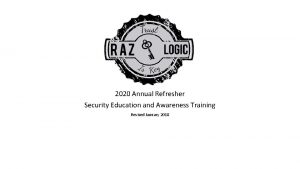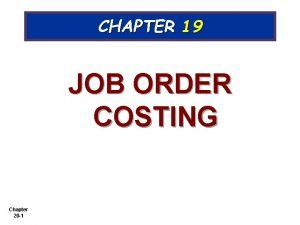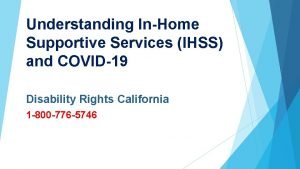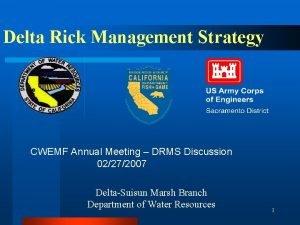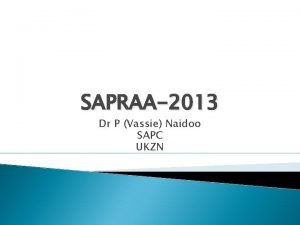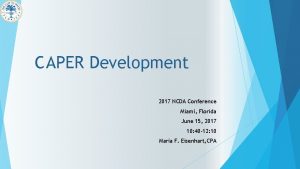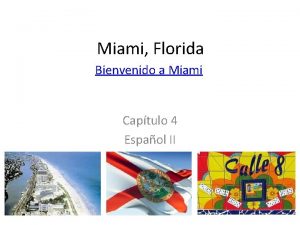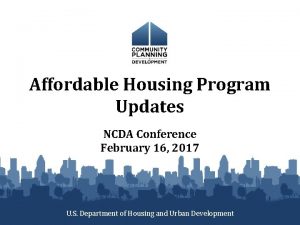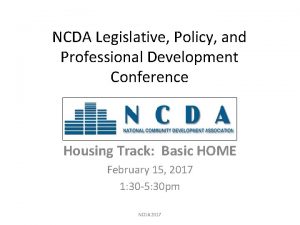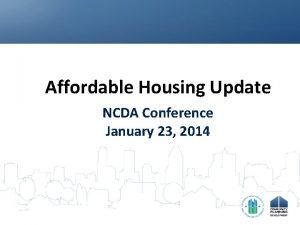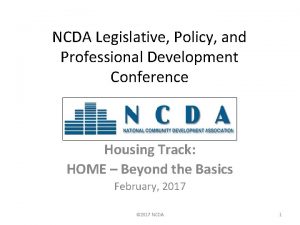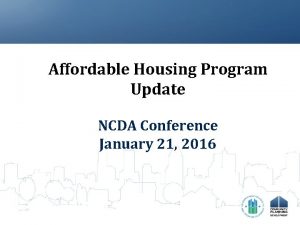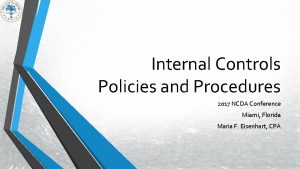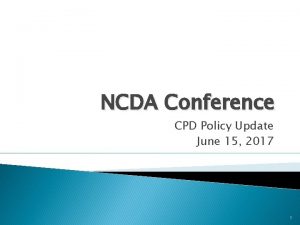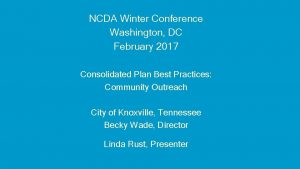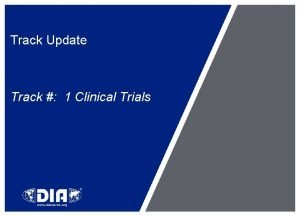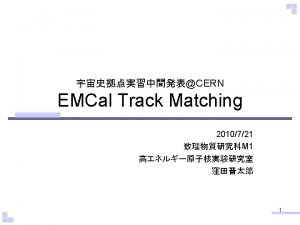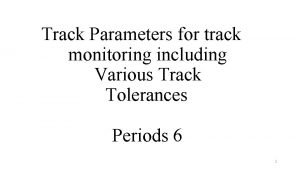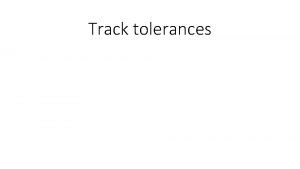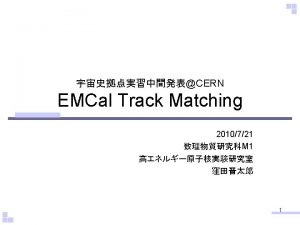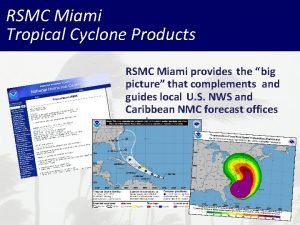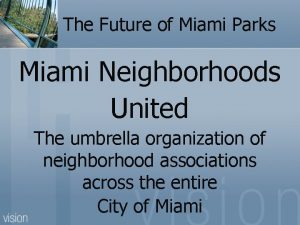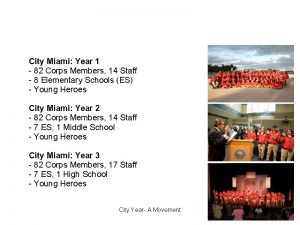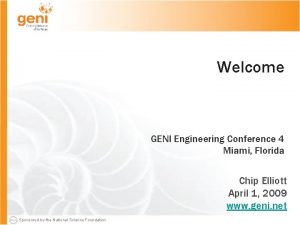2017 NCDA Annual Conference Miami Florida Housing Track











































![Underwriting and Subsidy Layering [§ 92. 250(b)] PJ must adopt underwriting guidelines: – That Underwriting and Subsidy Layering [§ 92. 250(b)] PJ must adopt underwriting guidelines: – That](https://slidetodoc.com/presentation_image_h2/b6119ece4f1dde119bd7446333279207/image-44.jpg)
![Underwriting and Subsidy Layering [§ 92. 250(b)] • PJ’s Guidelines must require: – Examination Underwriting and Subsidy Layering [§ 92. 250(b)] • PJ’s Guidelines must require: – Examination](https://slidetodoc.com/presentation_image_h2/b6119ece4f1dde119bd7446333279207/image-45.jpg)
![Underwriting and Subsidy Layering [§ 92. 250(b)] • Homebuyer Program Policies (§ 92. 254(f)(1)) Underwriting and Subsidy Layering [§ 92. 250(b)] • Homebuyer Program Policies (§ 92. 254(f)(1))](https://slidetodoc.com/presentation_image_h2/b6119ece4f1dde119bd7446333279207/image-46.jpg)













![Program Income III • Excludes… – CHDO Proceeds – Recapture of Homebuyer loans [HP] Program Income III • Excludes… – CHDO Proceeds – Recapture of Homebuyer loans [HP]](https://slidetodoc.com/presentation_image_h2/b6119ece4f1dde119bd7446333279207/image-60.jpg)



![Recaptured Funds [HP] • Repayments by homebuyer assisted by HOME funds with recapture provision Recaptured Funds [HP] • Repayments by homebuyer assisted by HOME funds with recapture provision](https://slidetodoc.com/presentation_image_h2/b6119ece4f1dde119bd7446333279207/image-64.jpg)
![Repayments of HOME Funds [IU] • PJ must repay because funds were invested: – Repayments of HOME Funds [IU] • PJ must repay because funds were invested: –](https://slidetodoc.com/presentation_image_h2/b6119ece4f1dde119bd7446333279207/image-65.jpg)






































- Slides: 103

2017 NCDA Annual Conference Miami, Florida Housing Track: HOME – Beyond the Basics June, 2017 © 2017 NCDA 1

HOME Investment Partnerships Program HOME – Beyond the Basics Presented by Sheryl Kenny © 2017 NCDA 2

Beyond the Basics This training will provide a more advanced look at certain areas of the HOME program including: 1. Overview of HOME Rule Changes 2. Monitoring Resources 3. HOME Program Agreements 4. Subsidy layering 5. Grant based accounting 6. Match Requirements 7. CDBG/HOME Comparison © 2017 NCDA 3

Future Course on Advanced HOME • NCDA has received numerous requests for an Advanced HOME course • 3 hours is not sufficient time to adequately cover the full range of advanced topics • Advanced HOME course is in the works • Feedback from today’s attendees will help shape course content • Please complete a survey and let NCDA know what you would like to see included in “Advanced HOME” © 2017 NCDA 4

HOME: Past, Present, Future • Past: Authorized by the Cranston-Gonzalez National Affordable Housing Act of 1990. The largest Federal block grant to States and local governments designed exclusively to create affordable housing for low-income families. • Present: Reduced funding and stricter rules for jurisdictions trying to build and support affordable housing. Unknown future of regulations and funding in general. • Future: Housing challenges continue to include aging housing stock and an affordable housing crisis in many areas of the country. Increasing need to connect lowincome families to rental and ownership housing opportunities. © 2017 NCDA 5

HOME Review Quick Quiz • Where can you find the regulations for the HOME program (CFR#)? • What activities can HOME be used for? • What is the maximum income cap on household eligibility for the HOME program? • When are 2017 HOME income limits effective? • If you have a rental program with HOME funds, 90 percent of the units in that year must be at what household income limit? © 2017 NCDA 6

Quick Quiz Continued • What is amount and purpose of the HOME set -aside for non-profit housing providers? • What is the amount and purpose of the matching funds for the HOME program? • What are the exceptions to the HOME match requirement and how do you qualify? • What is the commitment deadline for HOME funds in general? For CHDO funds? © 2017 NCDA 7

Cross Cutting Requirements • Which of the following apply to HOME: – Davis Bacon – Environmental Review – Section 3 – Lead Based Paint Regulations – Affordability Period – URA – Fair Housing © 2017 NCDA 8

HOME Rule Changes – HUD’s Purpose • Accelerate timely production/occupancy of assisted housing, • Strengthen performance of PJs and their partners in producing/preserving affordable housing units, • Provide PJs with greater flexibility in the design and implementation of their programs, and • Increase administrative transparency and accountability. © 2017 NCDA 9

HOME Survey • Use Your Phone or Laptop • 10 Question Survey • See Link Below: https: //www. surveymonkey. com/r/VM 9 CRJB © 2017 NCDA 10

1) HOME RULE CHANGES © 2017 NCDA 11

From CPD Notice 14 -08 © 2017 NCDA 12

2013 HOME Final Rule Highlights • HOME projects must be completed within four years of commitment. Any project that is not completed timely will be terminated and PJs will be required to repay HOME funds drawn. [§ 92. 205(e)(2)] • HOME-assisted rental units must be occupied by income-eligible households within 18 months of project completion; if not, PJs must repay HOME funds for the vacant units. Note, for units that remain vacant six months following completion, the PJ must identify and develop an enhanced marketing plan and report this information to HUD. [§ 92. 252] © 2017 NCDA 13

2013 HOME Final Rule Highlights • A homebuyer unit must have a ratified sales contract within nine months of construction completion, or the PJ must either convert it to a HOME rental unit or repay the full HOME investment. [§ 92. 254(a)(3)] • CHDO set-aside funds must be committed to specific projects within 24 months of the PJ receiving its HOME allocation. The PJ can no longer “reserve” CHDO funds for projects that will be identified at a later date. [§ 92. 2 Commitment, § 92. 300(a)(1)] • CHDO set-aside funds must be expended within 5 years of when the PJ receives its formula allocation. [§ 92. 500(d)(1)(A) and (C), and § 92. 500(d)(2)] © 2017 NCDA 14

2013 HOME Final Rule Highlights • PJs must underwrite all HOME projects to ensure that each project is financially sustainable over its affordability period. The underwriting review evaluates cost reasonableness, market demand, developer capacity, and the commitment of other funding sources. [§ 92. 250(b)] • PJs must adopt program policies for homebuyer programs that include underwriting guidelines to determine the appropriate amount of assistance necessary to assist the low-income buyer; assessment of a buyer’s ability to purchase and remain in the home (e. g. , housing and consumer debt ratios, anticipated income, and available assets); and anti-predatory lending and subordination policies. [§ 92. 254(f)] • Homebuyers must receive housing counseling before receiving HOME assistance (down payment assistance) or purchasing a HOME-assisted unit. [§ 92. 254(a)(3)] © 2017 NCDA 15

2013 HOME Final Rule Highlights • • • Property standards are updated to reference current national codes and to require that PJs establish standards that will sustain quality assisted housing for at least the affordability period. Within the 2013 Rule, property standards requirements are reorganized by project type – new construction, rehabilitation, acquisition without rehabilitation, and manufactured housing. [§ 92. 251] PJs must identify and plan for major systems repairs. For rental rehabilitation projects with 26+ units, this must be done via a capital needs assessment. The PJ must require that the scope of rehabilitation work and replacement reserves deposits must be sufficient to ensure the useful life of essential building components throughout the period of affordability. For homeownership housing, major systems must have a useful life of at least five years upon project completion. [§ 92. 251(b)(ii) and (viii)] PJs must develop inspection policies and procedures, including initial inspections of properties to be rehabilitated or acquired to determine the necessary scope of work to bring each property up to applicable standards; and progress and final inspections for all new construction and rehabilitation projects to ensure projects are constructed according to approved plans. HUD will issue guidance to identify for PJs the minimum required inspectable elements based on the Uniform Physical Conditions Standards. [§ 92. 251(g)] © 2017 NCDA 16

2013 HOME Final Rule Highlights • To qualify as a CHDO, a nonprofit must have paid staff whose experience qualifies them to undertake CHDO setaside activities. Capacity cannot be demonstrated by use of a consultant, except in the first year that a CHDO becomes certified. [§ 92. 2 Community housing development organization] • Each time the PJ commits HOME funds, it must re-certify a nonprofit’s qualifications to be a CHDO and its capacity to own, sponsor, or develop housing. [§ 92. 300(a)] • The roles of owner, developer, and sponsor for CHDOs using set-aside funds are more specifically defined. Among other changes, the 2013 Rule permits a PJ to provide CHDO set-aside funds for a CHDO that owns rental housing that it does not develop. [§ 92. 300(a)(2) – (6)] © 2017 NCDA 17

2013 HOME Final Rule Highlights • During the affordability period, PJs must examine the financial condition of projects with 10 or more HOME-assisted units at least annually, and must take action where feasible to correct problems that threaten a project’s financial viability. [§ 92. 504(d)(2)] • PJs may utilize a risk-based monitoring system and adjust the schedule of ongoing rental unit inspections as part of a risk-based monitoring system, but inspections must occur no less frequently than every 3 years. The first on-site inspection must occur within 12 months of project completion. § 92. 504(d) • PJs are permitted to charge certain fees: reasonable application fees, homebuyer counseling fees, and ongoing rental monitoring fees. The cost of inspections and income determinations for Tenant -Based Rental Assistance (TBRA) recipients may be charged as project soft costs. [§ 92. 214(b)(1) and § 92. 209(a)] © 2017 NCDA 18

2013 HOME Final Rule Highlights • PJs must develop risk-based monitoring systems for all HOME funded activities and projects, including on-site monitoring schedules and financial oversight protocols for rental properties. [§ 92. 504(a) and § 92. 504(d)(2)] © 2017 NCDA 19

From CPD Notice 14 -08 © 2017 NCDA 20

Group Exercise • Select one of the HOME Regulations changes that is the most challenging for your group. • Discuss strategies for complying with the new requirement. • Identify any information and/or training that is needed to help with compliance • Report to the group which regulation you selected, why it is challenging, and at least one strategy you discussed to increase compliance © 2017 NCDA 21

2) HOME MONITORING RESOURCES © 2017 NCDA 22

Purpose of Monitoring • Serve households most in need of housing resources • Maintain quality programs • Ensure federal funds are appropriately used • Maintain public trust that programs are working as intended • Safeguard funds • Ensure contractors, CHDOs and subrecipients are using funds according to written agreements © 2017 NCDA 23

HUD HOME Risk Factors for PJs • Factor 1: Financial – HOME Grant in top quartile of region’s PJs – Expenditure/Commitment deadlines not met? – PI not receipted in IDIS – Single audit not submitted to federal clearinghouse OR PJ has open findings and is overdue in carrying out corrective action – Key staff have demonstrated inability to administer HOME program or key vacancies open for 6+ months © 2017 NCDA 24

HUD HOME Risk Factors for PJs • Physical – PJ has not had HUD onsite monitoring visit in the past 3 years • Management – PJ has large rental projects (i. e. , 25+ units) – PJ administers more than 3 HOME activity types – CHDO activities not progressing based on commitment and disbursement reports – Program functions are carried out by other entities – Affordability requirements not met for activities – Staff capacity in adequate – PJ not monitoring projects/programs – OIG has scheduled review or is in the process of a review – PJ has been found to be non-compliant with Environmental Reviews © 2017 NCDA 25

HUD HOME Risk Factors for PJs • Client Dissatisfaction and complaints to HUD, when PJ is found to be in non-compliance with HOME regs • PJ’s income determination methodology has not been monitored in the past 3 years • PR 22 shows that > 20% of projects are not moving forward as required from commitment to construction to completion and occupancy © 2017 NCDA 26

PJ HOME Risk Factors for Subrecipients • • Total Grant Amount Staff Turnover in Key Positions HOME Findings in Audit Customer Complaints Performance Issues Desk Monitoring Reveals Errors/Missed Deadlines Late Reports/Invoices Contract Non-Compliance © 2017 NCDA 27

Determining Risk • Develop Risk Assessment Form • Assign A Point Value To Each Sub-factor – “High”, “Moderate”, Or “Low” Risk • Total Points • Plan Your Monitoring Accordingly © 2017 NCDA 28

HUD Monitoring Guide • Use to Prepare for HUD Monitoring Visit • Use to Monitor Subrecipients, Contractors, CHDOs, HOME Activities • See online access to HUD’s monitoring guide: • https: //www. hudexchange. info/resource/290 /hud-community-planning-and-developmentmonitoring-handbook-65092 -rev 6/ © 2017 NCDA 29

HUD Monitoring Guide • 7 -2 - Overall Management Systems • 7 -3 & 7 -4 - Review of Homeowner Rehabilitation Projects/Programs • 7 -5 & 7 -6 - Review of Homebuyer Projects/Programs • 7 -7 & 7 -8 - Review of Rental Projects/Programs • 7 -9 & 7 -10 - Review of TBRA Projects/Programs • 7 -11 & 7 -12 - Review of CHDO Qualifications and Activities/Procedures © 2017 NCDA 30

HUD Monitoring Guide 7 -13 - Review of Match Requirements 7 -14 - Review of Beneficiary Written Agreements 7 -15 - Review of Contractor Written Agreements 7 -16 - Review of Owner, Developer, Sponsor Written Agreements • 7 -18 - Review of Subrecipient Written Agreements • 7 -19 - Review of Subrecipient Management • • © 2017 NCDA 31

3) HOME PROGRAM AGREEMENTS © 2017 NCDA 32

HOME WRITTEN AGREEMENTS • See § 92. 504 • (a) Responsibilities. PJ is responsible for managing day-to-day operations of its HOME program, ensuring that HOME funds are used in accordance with all program requirements and written agreements, and taking appropriate action when performance problems arise. © 2017 NCDA 33

HOME WRITTEN AGREEMENTS • Before disbursing any HOME funds to any entity, the PJ must enter into a written agreement with that entity • The contents of the agreement may vary depending upon the role the entity is asked to assume or the type of project undertaken © 2017 NCDA 34

SUBRECIPIENT AGREEMENTS • A subrecipient is a public agency or nonprofit organization selected by the PJ to administer all or some of the PJ's HOME programs to produce affordable housing, provide down payment assistance, or TBRA © 2017 NCDA 35

SUBRECIPIENT AGREEMENTS • The agreement between the PJ and the subrecipient must include: – Use of the HOME funds – Program income – Uniform administrative requirements at 92. 505 – Other program requirements per federal law – Affirmative marketing at 92. 351 – Period of agreement, budget, timeline Continued on next slide © 2017 NCDA 36

SUBRECIPIENT AGREEMENTS • The agreement between the PJ and the subrecipient must also include: – Requests for disbursement of funds for eligible costs only – Reversion of assets – Maintenance of records and required reports – Enforcement of the agreement/remedies for breach of agreement – Written agreements with subs of subs – Description of fees not allowed by HOME © 2017 NCDA 37

OWNER, SPONSOR, DEVELOPER AGREEMENT • The written agreement committing the HOME funds to the project must meet the requirements of “commit to a specific local project” in the definition of “commitment” in § 92. 2 and contain the following: Use of HOME Funds Affordability Project Requirements Property Standards Other Program Requirements such as Affirmative Marketing, non-discrimination, anti-displacement – Records and Reports – – – © 2017 NCDA 38

OWNER, SPONSOR, DEVELOPER AGREEMENT • Enforcement of Affordable Housing elements of the Agreement • Request for disbursement of funds for eligible costs only • Duration of agreement • CHDO provisions for CHDOs • Prohibiting ineligible fees charged to renters and owners • Signed and dated © 2017 NCDA 39

CONTRACTOR AGREEMENT • The PJ selects a contractor through applicable procurement procedures and requirements. The contractor provides goods or services in accordance with a written agreement (the contract)of HOME funds with a minimum of: – Use of HOME Funds – Program Requirements – Duration of Agreement • See 92. 504 for additional requirements © 2017 NCDA 40

Homebuyer, Homeowner, or TBRA Tenant Agreement When a PJ provides assistance to a homebuyer, homeowner or tenant the written agreement may take many forms depending upon the nature of assistance. At a minimum: (i) For homebuyers, value of the property, principal residence, lease-purchase, if applicable, and resale or recapture provisions. Amount of HOME funds, form of assistance, e. g. , grant, amortizing loan, deferred payment loan, the use of the funds (e. g. , down-payment, closing costs, rehabilitation) and the time by which the housing must be acquired. (ii) For homeowners, specify the amount and form of HOME assistance, rehabilitation work to be undertaken, date for completion, and property standards to be met. (iii) For tenants, the rental assistance contract or the security deposit contract must conform to §§ 92. 209 and 92. 253. © 2017 NCDA 41

4) SUBSIDY LAYERING © 2017 NCDA 42

General Project Requirements • Underwriting and Subsidy Layering Analysis – If other funds in HOME Projects, PJ must: • Adopt Subsidy Layering Guidelines; and • Analysis of proposed HOME project, using SL Guidelines must: – Determine that the PJ is not putting more HOME funds into the project “than is necessary to provide affordable housing. ” – Analyze reasonableness of expenses, fees and return on investment in the project budget, and an examination of financial agreements such as loan and partnership documents. • The project files must contain the subsidy layering and underwriting analysis for the project. © 2017 NCDA 43
![Underwriting and Subsidy Layering 92 250b PJ must adopt underwriting guidelines That Underwriting and Subsidy Layering [§ 92. 250(b)] PJ must adopt underwriting guidelines: – That](https://slidetodoc.com/presentation_image_h2/b6119ece4f1dde119bd7446333279207/image-44.jpg)
Underwriting and Subsidy Layering [§ 92. 250(b)] PJ must adopt underwriting guidelines: – That it must not invest more HOME funds, alone or with other assistance: • than necessary to provide quality affordable housing that is financially viable for a reasonable period of time (at a minimum, the period of affordability). • that provides return that exceeds PJ’s established standards for the size, type, and complexity of the project. – For determining reasonable level of profit or return on owner/developer’s investment in project and evaluate projects before committing HOME funds. – PJ must develop, implement & certify that it has followed written policies & procedures which address Project Underwriting, Developer Capacity, & Market Need © 2017 NCDA 44
![Underwriting and Subsidy Layering 92 250b PJs Guidelines must require Examination Underwriting and Subsidy Layering [§ 92. 250(b)] • PJ’s Guidelines must require: – Examination](https://slidetodoc.com/presentation_image_h2/b6119ece4f1dde119bd7446333279207/image-45.jpg)
Underwriting and Subsidy Layering [§ 92. 250(b)] • PJ’s Guidelines must require: – Examination of sources and uses for each project and determination of whether the costs are reasonable; – Assessment, at minimum, of: • Market conditions of the neighborhood where project will be located • Housing development experience and financial capacity of developer • Firm financial commitments for the project. • PJs will be required certify that these assessments have been completed at the time of project funding in IDIS © 2017 NCDA 45
![Underwriting and Subsidy Layering 92 250b Homebuyer Program Policies 92 254f1 Underwriting and Subsidy Layering [§ 92. 250(b)] • Homebuyer Program Policies (§ 92. 254(f)(1))](https://slidetodoc.com/presentation_image_h2/b6119ece4f1dde119bd7446333279207/image-46.jpg)
Underwriting and Subsidy Layering [§ 92. 250(b)] • Homebuyer Program Policies (§ 92. 254(f)(1)) – PJ must have underwriting standards that evaluate: • • • Housing debt and overall debt of the family, Appropriateness of the amount of assistance, Monthly expenses of the family, Assets available to acquire the housing, and Financial resources to sustain homeownership; • Underwriting requirement does not apply to: – Homeowner rehab (unless HOME funds are provided as amortizing loan) © 2017 NCDA 46

Subsidy Layering Forms and Examples • See May 25 th HOME Webinar on Underwriting for Homebuyer Activities • HUD’s webinar is provided here: https: //www. hudexchange. info/trainings/courses/single-familyunderwriting-home-downpayment-assistance-underwritingtemplate-webinar/1969/ • As of 6/6/17, HUD was still finalizing the underwriting template and will post the document at the link above when complete © 2017 NCDA 47

5) FINANCIAL MANAGEMENT AND GRANT BASED ACCOUNTING © 2017 NCDA 48

Grant Based Accounting Changes • For each program year, the following tracked: – 2 Year Commitment Deadline • Waived by Congress in FY 17 Appropriations Package • CHDO 2 Year commitment deadline remains – 8 Year Expenditure Requirement – CHDO 15% Set-aside Requirement © 2017 NCDA 49

Grant Based Accounting Changes PJ Example FY 2015 Grant Based Accounting Deadlines HUD Notification 2 Year - CHDO Date - FY 2015 2 Year - Commitment Deadline (at 8 Year Expenditure HOME Grant Deadline least 15%) Deadline 8/15/2015 8/31/2017 9/30/2023 $1, 514, 118 $227, 118 $1, 514, 118 This example assumes a HUD grant agreement date of 8/15/2015 using actual 2015 HOME allocations. © 2017 NCDA 50

Tips and Resources • GBA is significantly different from FIFO – See Grant Based Accounting Matrix Of Key Changes By Program https: //www. hudexchange. info/resources/documents/Grant. Based-Accounting-Matrix-of-Key-Changes-by-Program. pdf • Funding HOME activities for each grant program year should be consistent with the PJ’s Annual Action Plan • When committing or drawing funds in IDIS, verify the correct HOME grant year • Use the updated IDIS manual to answer most of your questions about GBA and HOME: – www. hudexchange. info/onecpd/assets/file/HOME-IDIS-training. Manual-for-PJs. pdf © 2017 NCDA 51

Financial Management • Cash Disbursement Deadline • Not to be confused with Expenditure Deadline – Maximum limit of 15 days between: • Receipt of funds in Local HOME Trust Fund Account and • Disbursement (expenditure) of those funds. – Funds not disbursed within 15 days must be returned to Treasury HOME Trust Fund Account – Interest • Earned on HOME funds disbursed within 15 days is HOME Program Income • Earned after 15 days must be sent to Treasury © 2017 NCDA 52

Financial Management • Uniform Administrative Requirements – 2 CFR Part 200 (replaces – 24 CFR Part 84 & 85) • For awards made after 25 December 2014 – Big Picture Of Financial Mgmt – Grantees & Subrecipients » Procurement » Equipment, Supplies » Reporting » Closeout Procedures © 2017 NCDA 53

Financial Management • Uniform Administrative Requirements – 2 CFR Part 200 (also replaces - OMB Circulars A-87 (PJs) & A-122 (Subrecipients) – see HUD SD-201501) • Defines eligible costs and how costs charged • Apply to salaries, admin. costs, travel, & purchase and lease of real property © 2017 NCDA 54

Financial Management • Uniform Administrative Requirements – 2 CFR Part 200 – Cost Principles Examples: • § 200. 423 Alcoholic beverages. – Costs of alcoholic beverages are unallowable. • § 200. 438 Entertainment costs. – Costs of entertainment, including amusement, diversion, and social activities and any associated costs are unallowable, except where specific costs that might otherwise be considered entertainment have a programmatic purpose and are authorized either in the approved budget for the Federal award or with prior written approval of the Federal awarding agency. © 2017 NCDA 55

Financial Management • Audits – 2 CFR Part 200 (also replaces - OMB A-133) • Single Audit – Covers federal costs and all financial statements – PJs and subrecipients that spend $750, 000 (up from $500, 000) or more – Less than $750 k audit not required but financial statements must be available © 2017 NCDA 56

HOME Local Fund Types • Program Income (PI) – Funds received by the PJ, which were generated from the use of HOME or HOME match • Program Income for Administration (PA) – 10% of PI set aside for administrative expenses • Repayments to local account (IU) – Ineligible project-related disbursements – Create receipt only if directed by HUD field office • Recaptured Funds (HP) – Funds received by the PJ as part of a homebuyer recapture provision © 2017 NCDA 57

Program Income I • Gross income received by recipient or subrecipient directly generated from use of HOME funds – PI important additional ongoing source of funding • Use must meet all HOME requirements (becomes HOME funds) – PJ must track receipt and expenditure of program income – Increases amount that can be spent under administrative cap (i. e. ten percent of HOME grant plus program income). © 2017 NCDA 58

Program Income II • Examples…proceeds from: – Sale or lease of real property improved with HOME – Gross rent from PJ’s HA real property or personal property (after deducting costs to generate income) • Rent from non-PJ HA property is not PI – Principal and interest on HOME loans – sale of loans made with HOME funds or matching contributions – Interest earned on program income © 2017 NCDA 59
![Program Income III Excludes CHDO Proceeds Recapture of Homebuyer loans HP Program Income III • Excludes… – CHDO Proceeds – Recapture of Homebuyer loans [HP]](https://slidetodoc.com/presentation_image_h2/b6119ece4f1dde119bd7446333279207/image-60.jpg)
Program Income III • Excludes… – CHDO Proceeds – Recapture of Homebuyer loans [HP] – Repayments of HOME funds (e. g. , for ineligible activities) [IU] – Proceeds from fundraising activities carried out by subrecipients – New - gross income from the use, rental, or sale of real property received by the project owner, developer, or sponsor • Unless the funds are paid by the project owner, developer, or sponsor to the PJ, or subrecipient. © 2017 NCDA 60

Program Income IV • See new guidance on HOME Program Income • Beginning w/2017 annual action plan: – • Must include local account funds received during the program year in the following year’s annual action plan. • Applies to all funds in the local account, including: – Program income (PI) – Recaptured funds (HP) – Repayments to the local account (IU) © 2017 NCDA 61

Program Income V • PJ may allow subrecipients to use PI for affordable housing or require them to return it to PJ – Must be spelled out in agreement – Must track and report whether used or returned to PJ – Subrecipient retained PI does not increase admin. cap © 2017 NCDA 62

General PI Management 1. PJs have to estimate and plan for PI and HP in the Annual Action Plan for the following year. 2. PJs have to track and receipt PI & HP in IDIS. • PJs no longer have to disburse PI & HP before drawing additional funds from the Treasury account (See HUD Webinar on HOME Grant. Specific Commitment Interim Rule) © 2017 NCDA 63
![Recaptured Funds HP Repayments by homebuyer assisted by HOME funds with recapture provision Recaptured Funds [HP] • Repayments by homebuyer assisted by HOME funds with recapture provision](https://slidetodoc.com/presentation_image_h2/b6119ece4f1dde119bd7446333279207/image-64.jpg)
Recaptured Funds [HP] • Repayments by homebuyer assisted by HOME funds with recapture provision • Deposited in local HOME account (or subrecipient account) and are • Treated like Program Income in all ways (except recorded in IDIS as [HP]) – Except that they can’t be used to increase admin. cap © 2017 NCDA 64
![Repayments of HOME Funds IU PJ must repay because funds were invested Repayments of HOME Funds [IU] • PJ must repay because funds were invested: –](https://slidetodoc.com/presentation_image_h2/b6119ece4f1dde119bd7446333279207/image-65.jpg)
Repayments of HOME Funds [IU] • PJ must repay because funds were invested: – In a project terminated before completion, or – In housing which failed to comply with HOME requirements. • Deposited in either (at HUD’s discretion): – Local HOME account or • Treated like Program Income in all ways (except recorded in IDIS as [IU]) – And can’t be used to increase administration cap – PJ’s HOME Treasury Account • Special HUD procedure adds back into PJ’s grant in IDIS © 2017 NCDA 65

Financial Management Exercise • Run the HOME Deadline Compliance Status Reports - Grant Specific • Sort by PJ, find your PJ and record the shortfall amounts and deadlines for HOME commitments and disbursements • Discuss strategies with your group for meeting future deadlines © 2017 NCDA 66

Financial Management Exercise © 2017 NCDA 67

6) MATCHING CONTRIBUTION REQUIREMENT © 2017 NCDA 68

Matching Contribution Requirement • Overview – 25% Match Required • To encourage partnership between Federal Government and PJs – Contributions to HOME- and non-HOME-Assisted Housing allowed • Non-HOME housing must meet HOME requirements © 2017 NCDA 69

Match Requirements • Overview – Timing of Match is important • Match requirement not tied to individual projects but to total project funds expended during the Federal Fiscal Year • Match obligation incurred w/ every HOME project drawdown • Match credit can be added at any time during year • Must have sufficient match credit at end of Federal Fiscal Year to cover match obligations – Excess Match carries over • May be used for subsequent match obligation © 2017 NCDA 70

Match Requirements Part II Fiscal Year Summary (From HUD 40107 -A, HOME Match Report form) Excess match from prior federal fiscal year 1. 2. Match contributed during current federal fiscal year (see $ 25, 000. 00 $ 75, 000. 00 Part III. 9. ) 3. Total match available for current federal fiscal year (line 1 $100, 000 + line 2) 4. Match liability for current federal fiscal year 5. Excess match carried over to next federal fiscal year (line 3 (Based on HOME grant expenditure of $330, 000) $ 82, 500 $ 17, 500 minus line 4) © 2017 NCDA 71

Match Requirements • HOME Funds Required to be Matched – Grant funds (not PI) expended for HOME projects, ownership programs, and TBRA • HOME funds not required to be matched – Administrative and planning costs; – CHDO operating expenses; – CHDO capacity building; and – Project specific assistance to CHDOs, but only when participating jurisdiction waives repayment. © 2017 NCDA 72

Match Requirements • Recognition of Matching Contribution – Match Contributions to HOME-assisted housing and tenants - I • Tenants – Non-federal contributions to HA tenants. – E. g. , State-funded tenant-based rental assistance program © 2017 NCDA 73

Match Requirements • Recognition of Matching Contribution – Match Contributions to HOME-assisted housing and tenants – II • HOME-Assisted Units – Non-federal contributions made to HOME-assisted units. • Partially HOME-Assisted Projects: – >50 percent of HA units in a project » Contribution to non-assisted units counts – <50 percent of HA units » Contribution only to HOME-assisted units and HOMEeligible units counts © 2017 NCDA 74

Match Requirements • Recognition of Matching Contribution – Match Contributions to HOME-assisted housing and tenants – III • Mixed-Use Projects – If at least 51 percent of floor space is residential and at least 50% of residential dwelling units are HA: » Contribution to commercial space and non-assisted units counts © 2017 NCDA 75

Match Requirements • Recognition of Matching Contribution – Match Contributions to non-HOME-assisted housing and tenants – I • Non-HOME TBRA – Meets HOME TBRA requirements – Document how it meets HOME requirements • Non-HA Project Units – Meets HOME rental or ownership requirements; and – Agreement w/owner that imposes HOME requirements © 2017 NCDA 76

Match Requirements • Recognition of Matching Contribution – Match Contributions to non-HOME-assisted housing and tenants – II • Non-HA Units (continued) – PJ monitors housing for HOME requirements – Mixed-income and mixed-use unit count only for contributions to affordable units © 2017 NCDA 77

Match Requirements • Recognition of Matching Contribution – Match Contributions to non-HOME-assisted housing and tenants – III • Match for non-HA units may be in any eligible form of matching contribution (next slide) except: – – Forbearance of fees; On-site and off-site infrastructure; Direct cost of supportive services; and Direct costs of homebuyer counseling services © 2017 NCDA 78

Match Requirements • Forms of Matching Contribution Cash Contributions Forbearance of Fees Donated Real Property On- and off-site infrastructure Affordable Housing Bond Proceeds Donated Site Preparation and Construction Materials and Equipment – Donated or Voluntary Labor or Services – Sweat equity – Direct Cost of Support and Homebuyer Counseling Services – – – © 2017 NCDA 79

Match Requirements • Forms of Matching Contribution – Cash contributions - I • Contributed permanently to the development of a HOME project (or to non-HA affordable housing), only (New): 1. In the amount by which the investment reduced the sales price to the homebuyer, or 2. If development costs exceed the fair market value of the housing, in an amount by which the contribution enabled the housing to be sold for less than its development cost. © 2017 NCDA 80

Match Requirements • Forms of Matching Contribution – Cash contributions - II • Loans if all repayments (including interest) are deposited in local HOME account and only if funds are loaned to HA project; • Cash contribution to a nonprofit organization for use in HA project; • Grant equivalent of a below-market interest rate loan; and/or • Proceeds of bonds (not repaid with revenue from affordable housing project ) that are loaned to a HA or other qualified affordable housing project. © 2017 NCDA 81

Match Requirements • Forms of Matching Contribution – Forbearance of Fees • State and local taxes, charges or fees (by public or private entities) are waived, foregone, or deferred • Allowed only when they are “normally and customarily imposed or charged by public or private entities” © 2017 NCDA 82

Match Requirements • Forms of Matching Contribution – Donated Real Property • Value, before HOME assistance provided and minus any debt burden, lien, or other encumbrance, of donated land or other real property • Donation by PJ, non-federal public entities, private entities, or individuals • Federal-assisted acquisition allowed if purchase price substantially less than appraised value. – Contribution allowed is difference between purchase price and appraised value. © 2017 NCDA 83

Match Requirements • Forms of Matching Contribution – On-site and off-site infrastructure (supporting HA housing) • Provided they are not paid from federal sources (e. g. , CDBG) • Infrastructure improvements must have been completed no more than 12 months before HOME funds are committed to project. © 2017 NCDA 84

Match Requirements • Forms of Matching Contribution – Affordable housing project bond proceeds • Issued by a state or local government or agency with following limitations: – 50% of proceeds from a multi-family bond issue count as match; – 25% of proceeds from a single-family bond issue count as match; – Total bond funds counted cannot exceed 25% of a PJ’s total annual match Contribution. » Excess above 25% can be carried over © 2017 NCDA 85

Match Requirements • Forms of Matching Contribution – Donated site-preparation and construction materials and equipment • Not acquired with federal funds • “Reasonable” value of materials may be counted as match • “Reasonable” rental value of such equipment © 2017 NCDA 86

Match Requirements • Forms of Matching Contribution – Donated or voluntary labor or professional services • Donated to affordable housing. • HUD sets a rate for unskilled labor. • Rate for professional services is that customarily charged by person providing services. © 2017 NCDA 87

Match Requirements • Forms of Matching Contribution – Sweat Equity • If part of PJ’s established homeownership program, • Rate set by HUD for unskilled labor © 2017 NCDA 88

Match Requirements • Forms of Matching Contribution – Direct cost of supportive services • Provided to families residing in HOME-assisted units during period of affordability or during term of TBRA • Necessary to facilitate independent living or are required as part of a self-sufficiency program, supportive services © 2017 NCDA 89

Match Requirements • Forms of Matching Contribution – Direct cost of homebuyer counseling services • Provided to homebuyers who receive HOME-assistance in their purchase of a home • Counseling services (including post-purchase counseling during affordability period) © 2017 NCDA 90

Match Requirements • Ineligible Forms of Match – Contributions made with or derived from federal resources or funds (including CDBG). – Interest rate subsidy attributable to federal taxexemption on financing – Value attributable to federal tax credits; – Owner equity or investment in a project; and – Cash or other forms of contributions from • Applicants for or recipients of HOME assistance or contracts, or • Investors who own, are working on, or are proposing to apply for, assistance for a HOME-assisted project. © 2017 NCDA 91

Match Requirements • When credit is given - I – Cash contribution – when expended; – Grant equivalent of a below-market interest rate loan – at loan closing; – Waived taxes, fees, and charges – at time state or local government or other entity notifies project owner; – Value of donated land or other real property - at time ownership of property is transferred to HOME project (or affordable housing) owner; – Infrastructure Improvements - at time funds are expended or at HOME commitment, if funds were expended prior to that; – Donated material - at time it is used for affordable housing; © 2017 NCDA 92

Match Requirements • When credit is given – II – Donated use of site preparation or construction equipment - at time equipment is used for affordable housing; – Donated or voluntary labor or professional services - at time work is performed; – Bond proceeds - at time of loan closing. – Social services provided to residents of HOME-assisted units - at time that social services are provided during period of affordability; and – Homebuyer counseling services - at time that homebuyer purchases unit or for post-purchase counseling services, at time counseling services are provided. © 2017 NCDA 93

Match Requirements • Match Credit when more than one PJ is involved: – HOME-assisted project • PJ making match credit may keep it or allow other PJ to claim credit. – Non-HOME-assisted project • PJ making match credit receives credit. • Match Credit for a consortium is calculated based on the consortium as a whole © 2017 NCDA 94

Match Example • Middle City has three sources of $75, 000 total match to HA projects: • A donation of $5, 000 in cash by a bank; • Mid City waived its building permit fee (normally $5, 000) and land was donated by a generous abutter ( property was appraised at $100, 000 and property was sold for $40, 000=$60, 000 donation); and • Mid City provided infrastructure improvements (worth $5, 000 in labor and materials) to site with a Public Works crew. © 2017 NCDA 95

Match Example Part III Match Contribution for the Federal Fiscal Year (From HUD 40107 -A, HOME Match Report form) Project No or other ID Date of Contribution Cash #16 -01 9/30/09 $5, 000 #16 -21 12/25/09 #16 -23 4/1/10 Foregone Taxes, Fees, Charges Appraised Land/Real Property Required Infrastructure Site Preparation Bond Financing Total Match $5, 000 $60, 000 $65, 000 $5, 000 Total © 2017 NCDA $75, 000 96

Match Requirements • REDUCTION OF MATCHING CONTRIBUTION REQUIREMENT – PJs that are in fiscal distress or that are in a federally-declared disaster area may qualify • Fiscal distress – Two criteria for determining fiscal distress: Poverty rate and Per capita income. – One criterion 50% match contribution reduction, good for one year. – Both criteria, 100% match contribution reduction, good for two years. © 2017 NCDA 97

Match Requirements • REDUCTION OF MATCHING CONTRIBUTION REQUIREMENT • Disaster areas – If PJ is located in a federally-declared disaster area (under Stafford Act), it may request a reduction of its match contribution requirement. – PJ’s HUD field office may grant up to 100% reduction for two years, and may extend it for an additional year at request of PJ. © 2017 NCDA 98

Match Exercise • Discuss match sources for your PJ and share ideas with group members • Does your PJ have excess match? • What are ways to find eligible HOME match when match falls behind or is at risk of being short? © 2017 NCDA 99

7) HOME VS CDBG COMPARISON © 2017 NCDA 100

CDBG and HOME Comparison • See Handy Resource Comparison Chart on the following page, which summarizes the differences to consider when determining whether to use CDBG or HOME for a specific activity or project © 2017 NCDA 101

Requirement 1. Income Limits CDBG (Project Based) 80% of AMI (“Moderate Income”) – Threshold for all CDBG housing [50% of AMI (“Low Income”)] 2. Funding Limits: CDBG (Project) and HOME (Assisted Units) 3. Eligible Activity Limits 4. Affordability Period 5. Restriction on Subsequent Funding HOME (Unit Based) Ownership: HOME AU 80% of AMI (“Low Inc. ”) Rental: 1. HAUs: 80% of AMI; However: 2. 90% of PJ’s units: 60% of AMI 3. Large projects: 20% of units at 50% of AMI (“Very Low Income”) 1. If more than 51% L/M occupied, no funding 1. limits 2. If between 20% & 50% L/M occupancy and supporting new construction of non-elderly rental units, CDBG funding is pro-rated to L/M 2. Occupancy. 3. 3. Assistance for downpayment assistance can’t exceed 50% of the downpayment No New Construction (but acquisition & site improvements OK) No restrictions None (Income eligible at occupancy) 5 – 20 Years No 1. 2. 6. Subsidy Layering, Underwriting, & Market Analysis 7. Rent Limits 8. Property Standards 9. Other Requirements Apportioning funds based on HOME Funds/TDC = # of HA units to Total units (e. g. 10% of TDC requires at least 10% HOME Assisted [HA] units) Maximum per unit subsidy Minimum - $1000 per HA Unit No Can add for 1 year after completion but can’t exceed Max. per unit Subsidy No additional HOME funds during affordability period Yes (except DPA-only & owner-occupied Rehab. ) Grantee establishes & makes public “Affordable 1. High HOME Rent (for 51 to 80% AMI units) Rents” Standards 2. Low HOME Rent (for 50% and lower AMI Units None Yes Cross-Cutting Federal Requirements (ERR, 1. Rental: Fixed or Floating Units Labor, Lead Paint, etc. ) Determination 2. Ownership: Resale Requirements (Recapture funds or limited resale) 3. Cross-Cutting Federal Requirements © 2017 NCDA 102

Discuss Advanced HOME Training • In what specific areas of the HOME program do you or your staff need training? • Training format options: – Case Studies – Best Practices – Hands-On Exercises – Advanced Certification © 2017 NCDA 103
 Njdv
Njdv Cdf certification
Cdf certification Ncda&cs agronomic division
Ncda&cs agronomic division Chapter 15 temperature heat and expansion
Chapter 15 temperature heat and expansion American epilepsy society annual meeting 2017
American epilepsy society annual meeting 2017 Florida high school track and field
Florida high school track and field Nmls resource center
Nmls resource center Travel health insurance association annual conference
Travel health insurance association annual conference Stfm abstract submission
Stfm abstract submission Organization development network annual conference
Organization development network annual conference Gie annual conference
Gie annual conference Stfm conference
Stfm conference Nacada annual conference
Nacada annual conference Gcyf 2011 annual conference
Gcyf 2011 annual conference Annual fuze conference
Annual fuze conference Hepi annual conference
Hepi annual conference Pbfeam
Pbfeam Iowa league of cities annual conference
Iowa league of cities annual conference Afp annual conference 2020
Afp annual conference 2020 The florida project 2017
The florida project 2017 Housing first partners conference
Housing first partners conference Nc affordable housing conference
Nc affordable housing conference Zenobia cann
Zenobia cann Conference in florida
Conference in florida Conference in florida
Conference in florida 2017 asco oncology practice conference
2017 asco oncology practice conference Arma conference 2017
Arma conference 2017 Cit international conference
Cit international conference Syteline user network conference 2017
Syteline user network conference 2017 Ola miami.performance matters
Ola miami.performance matters Mushroom compost miami ok
Mushroom compost miami ok Brazilian trade and investment promotion agency
Brazilian trade and investment promotion agency Miami herald silver knight
Miami herald silver knight Jwg miami fl
Jwg miami fl Matthew greer miami
Matthew greer miami Um hsro
Um hsro Sprinkles dallas
Sprinkles dallas Hair transplant institute miami
Hair transplant institute miami Miami sustainability plan
Miami sustainability plan Fti insurance
Fti insurance Central region office
Central region office Bidsync miami dade
Bidsync miami dade Miami dade fingerprinting
Miami dade fingerprinting Miami sunset senior high football
Miami sunset senior high football Carver middle school dress code
Carver middle school dress code Evalue miami
Evalue miami Global automotive parts miami
Global automotive parts miami Eprost university of miami
Eprost university of miami Smsh south miami
Smsh south miami Miami pediatric nephrology seminar
Miami pediatric nephrology seminar Performance matters miami dade
Performance matters miami dade Performance matters miami dade
Performance matters miami dade Jewett brace vs taylor brace
Jewett brace vs taylor brace Miami beach senior high scholars program
Miami beach senior high scholars program Miami-dade county parks and recreation staff
Miami-dade county parks and recreation staff Launchpad miami
Launchpad miami Gw carver middle school miami
Gw carver middle school miami Pulleys miami university
Pulleys miami university Fnaim paris
Fnaim paris Estate planning council of greater miami
Estate planning council of greater miami Mongols miami
Mongols miami Miami
Miami International gateway of the americas
International gateway of the americas Miami university academic advising
Miami university academic advising Pewnego razu w miami
Pewnego razu w miami Growing up in miami
Growing up in miami Juvenile assessment center miami
Juvenile assessment center miami Eprost university of miami
Eprost university of miami Gw carver middle school miami
Gw carver middle school miami Dynamics gp miami
Dynamics gp miami Young women's preparatory academy uniform
Young women's preparatory academy uniform Miami killian senior high school rating
Miami killian senior high school rating Miami to la
Miami to la Annual worth adalah
Annual worth adalah Moray dewhurst
Moray dewhurst Ohsc annual returns
Ohsc annual returns 100 hour inspection logbook entry
100 hour inspection logbook entry Aapg annual convention
Aapg annual convention Immuno oncology bd&l and investment forum
Immuno oncology bd&l and investment forum Quiksilver
Quiksilver Swot analysis of school improvement plan
Swot analysis of school improvement plan Annual cash flow analysis
Annual cash flow analysis Annual business review slide
Annual business review slide Patrick wendell net worth
Patrick wendell net worth 33 cfr 105
33 cfr 105 Present worth to annual worth
Present worth to annual worth Annual
Annual Compal electronics inc annual report
Compal electronics inc annual report Aashto annual meeting 2015
Aashto annual meeting 2015 Working capital investment example
Working capital investment example Annual dinner planner
Annual dinner planner Sace annual report
Sace annual report Bond formula
Bond formula American psychiatric association annual meeting 2020
American psychiatric association annual meeting 2020 Effective annual rate
Effective annual rate Namco cybertainment inc
Namco cybertainment inc Cfa annual 2019
Cfa annual 2019 Forest plants
Forest plants Annual motion drawing
Annual motion drawing Information security program refresher training
Information security program refresher training Marquis company estimates that annual manufacturing
Marquis company estimates that annual manufacturing Ihss parent provider regulations 2020
Ihss parent provider regulations 2020 Cwemf
Cwemf Sapc annual declaration
Sapc annual declaration


